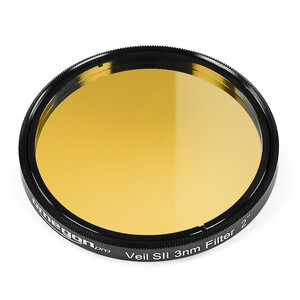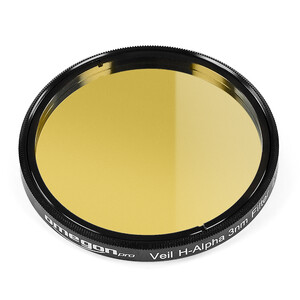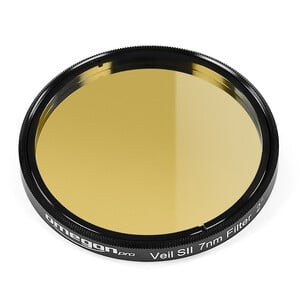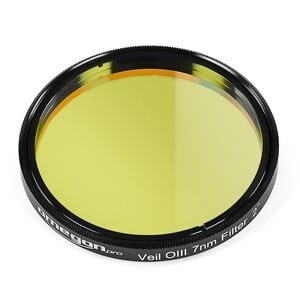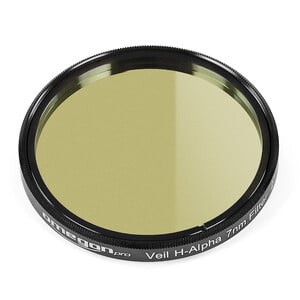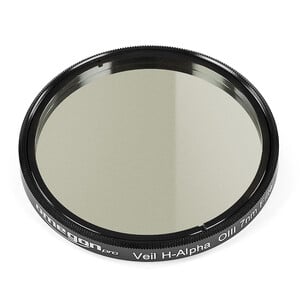Hidden in the light – the colours of emission nebulae
There are a large number of lights in and around human settlements. This lighting not only helps us to find our way in the dark, it also brightens up the sky. Faint celestial objects then disappear – they are obscured by the artificial sky brightening.
In contrast to stellar objects such as globular clusters and galaxies or reflection nebulae, such as the blue glow around the Pleiades, emission nebulae emit their light in very specific colours. The brightest of these so-called emission lines are
- H-Alpha: 656.3 nm
- H-Beta: 486.1 nm
- O-III_1: 495.9 nm
- O-III_2: 500.7 nm
- S-II_1: 671.7 nm
- S-II_2: 673.1 nm
While only the O-III and H-beta lines can be detected with the naked eye due to the poor red sensitivity of the human eye, a camera can capture all colours.
High-performance nebulae filters such as the Omegon Veil Nebula Filters suppress artificial lighting but allow the colours of the nebulae to pass through. This means that faint emission nebulae such as the Cirrus Nebula or the North America Nebula can also be observed outside the desert or high mountains.
Narrowband filter for the OIII lines at 495.9 and 500.7 nm
This filter is suitable for observation and photographing OIII regions from areas affected by light pollution or areas with dark skies.
The OIII filter increases the contrast between certain types of astronomical objects (mainly supernova remnants and planetary nebulae) and the sky background. Due to its narrow half-width and high transmission in the OIII line range, it achieves a greater contrast increase than filters with a larger bandwidth. The range of application extends from an aperture ratio of 1:3 to 1:15 for telescopes with an aperture of 6" (150 mm) or more for observation at medium magnification and lenses and telescopes of all diameters for astrophotography.
Mode of action
The filter completely blocks the emission lines of low- and high-pressure lamps (mercury (Hg) and sodium (Na)) and the lines of the airglow. The two OIII lines can pass through the filter with very high transmission.

